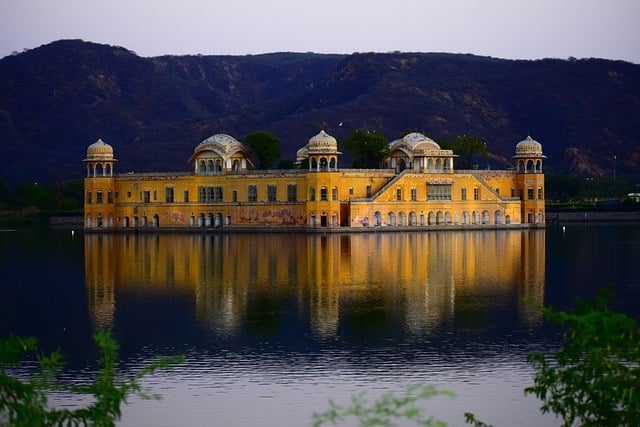Welcome to Jaipur, the capital city of Rajasthan and a place where history, culture, and vibrant colors come together to create an unforgettable experience. Known as the Pink City due to the distinctive color of its buildings, Jaipur is a treasure trove of architectural wonders, bustling markets, and rich traditions. Let’s embark on a journey to explore what makes Jaipur a must-visit destination.
A Glimpse into History
Jaipur was founded in 1727 by Maharaja Sawai Jai Singh II, a visionary ruler with a keen interest in astronomy, architecture, and urban planning. Unlike many cities of its time, Jaipur was meticulously planned using principles from ancient Indian Vastu Shastra (science of architecture) and Shilpa Shastra (science of sculpture). The city was divided into nine blocks, symbolizing the nine divisions of the universe, and was surrounded by massive walls and imposing gates.
In 1876, during the visit of the Prince of Wales (later King Edward VII), the entire city was painted pink to welcome the royal guest. Pink, the color of hospitality, has since become a defining characteristic of Jaipur.

Architectural Marvels
Jaipur is home to some of the most stunning architectural wonders in India, each telling a story of its royal past.
Hawa Mahal (Palace of Winds):
City Palace:
Located in the heart of Jaipur, the City Palace. It serves as a museum showcasing royal costumes, artifacts, and weapons, and also houses the current royal family. Don’t miss the stunning Peacock Gate and the beautifully adorned Chandra Mahal.
Amber Fort:
Just a short drive from the city, the Amber Fort is a majestic fortress perched on a hilltop. Built from red sandstone and marble, it combines Hindu and Mughal architectural styles. Explore the ornate halls, such as the Sheesh Mahal (Mirror Palace), and enjoy an elephant ride up the cobbled paths to the fort’s entrance.
Jantar Mantar:
This UNESCO World Heritage site is an astronomical observatory built by Maharaja Sawai Jai Singh II. It houses the world’s largest stone sundial and various instruments designed to measure time and track celestial bodies with remarkable precision.
Vibrant Markets and Shopping
Jaipur is a shopper’s paradise, offering a wide array of handicrafts, textiles, and jewelry. The bustling bazaars are a riot of colors and scents, where you can find everything from traditional Rajasthani attire to exquisite gemstones.
Johari Bazaar:
Famous for its stunning collection of jewelry, Johari Bazaar is the place to go for precious and semi-precious stones, gold, silver, and the renowned Kundan and Meenakari jewelry.
Bapu Bazaar:
Known for its vibrant textiles and leather goods, Bapu Bazaar is the perfect place to buy colorful bandhani (tie-dye) fabrics, mojari (traditional Rajasthani footwear), and handcrafted bags.
Tripolia Bazaar:
This market is renowned for its lac (lacquer) jewelry and bangles, as well as traditional textiles and brassware.
Chandpole Bazaar:
A hub for marble sculptures and handicrafts, Chandpole Bazaar is a great place to find unique souvenirs and decorative items.
Culinary Delights
Jaipur’s cuisine is as rich and diverse as its culture. The city offers a tantalizing array of traditional Rajasthani dishes that are a feast for the senses.
Dal Baati Churma:
A quintessential Rajasthani dish, it consists of baked wheat balls (baati) served with a spicy lentil curry (dal) and a sweet crumbly dessert (churma).
Laal Maas:
A fiery red meat curry made with mutton, yogurt, and a blend of hot spices. It’s a must-try for those who enjoy spicy food.
Ghewar:
A traditional Rajasthani sweet, ghewar is a disc-shaped dessert made from flour, soaked in sugar syrup, and often topped with cream or nuts.
Pyaaz Kachori:
These deep-fried pastries stuffed with a spicy onion filling are a popular snack, especially enjoyed with tamarind chutney.
Festivals and Culture
Jaipur is a city that loves to celebrate, and its calendar is packed with vibrant festivals and cultural events.
Jaipur Literature Festival:
Held annually in January, this festival is a haven for book lovers. It attracts authors, poets, and literary enthusiasts from around the world for discussions, readings, and book signings.
Teej Festival:
Celebrated in July or August, Teej is a monsoon festival dedicated to the goddess Parvati. Women dress in colorful saris, adorn themselves with jewelry, and participate in traditional songs and dances.
Gangaur Festival:
This festival, dedicated to the goddess Gauri, is celebrated with great fervor. Women carry beautifully decorated idols of Gauri in processions, accompanied by music and dance.
Diwali:
The entire city is illuminated with lights, and markets are adorned with decorations, making it a spectacular sight.
Practical Tips for Visitors
Best Time to Visit:
The ideal time to visit Jaipur is from October to March when the weather is pleasant and perfect for sightseeing.
Getting Around:
Jaipur has a well-connected network of auto-rickshaws, cycle rickshaws, and taxis. For a more authentic experience, you can also hire a bicycle or take a ride in a traditional horse-drawn carriage (tonga).
Language:
While Hindi is the primary language spoken in Jaipur, English is widely understood, especially in tourist areas.
Safety:
Jaipur is generally a safe city for tourists, but it’s always advisable to take standard precautions.
Conclusion
Jaipur, with its rich history, architectural marvels, vibrant markets, and cultural festivals, offers a unique and immersive experience. Whether you’re a history buff, a foodie, a shopaholic, or simply looking to soak in the colorful atmosphere, the Pink City has something for everyone. A visit to Jaipur is not just a trip; it’s a journey into a world where past and present blend seamlessly, leaving you with memories to cherish forever.
